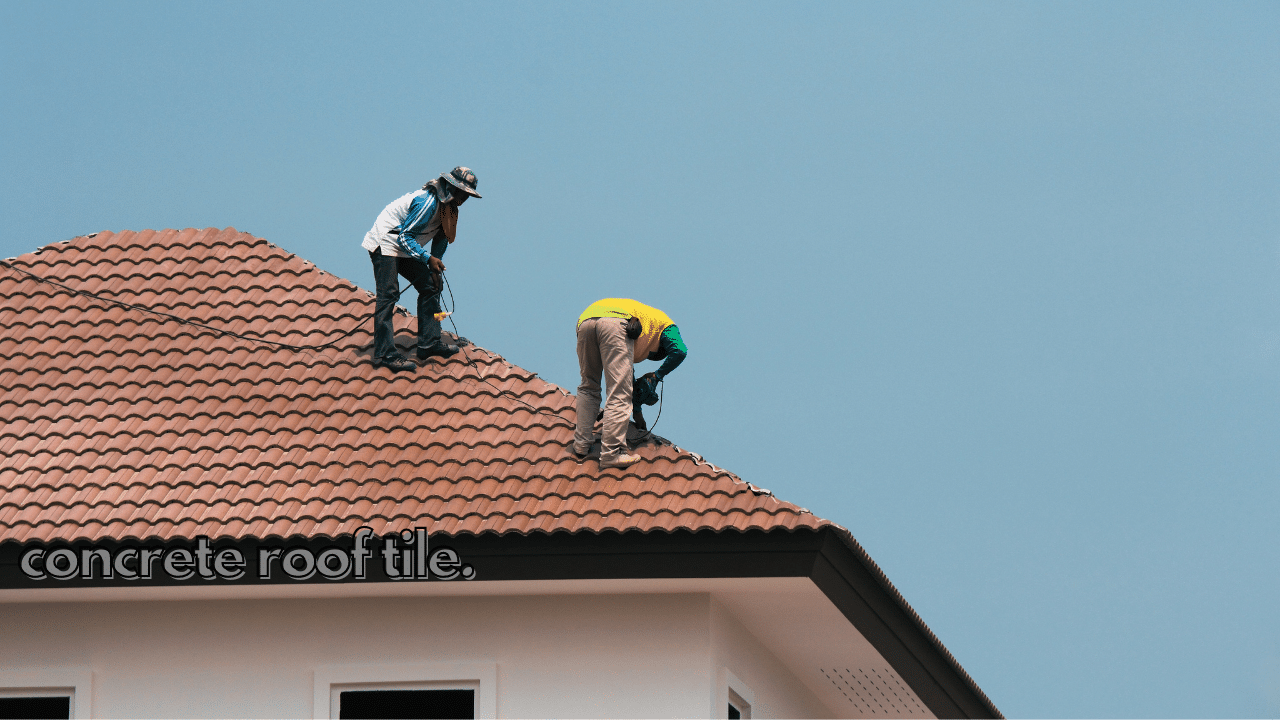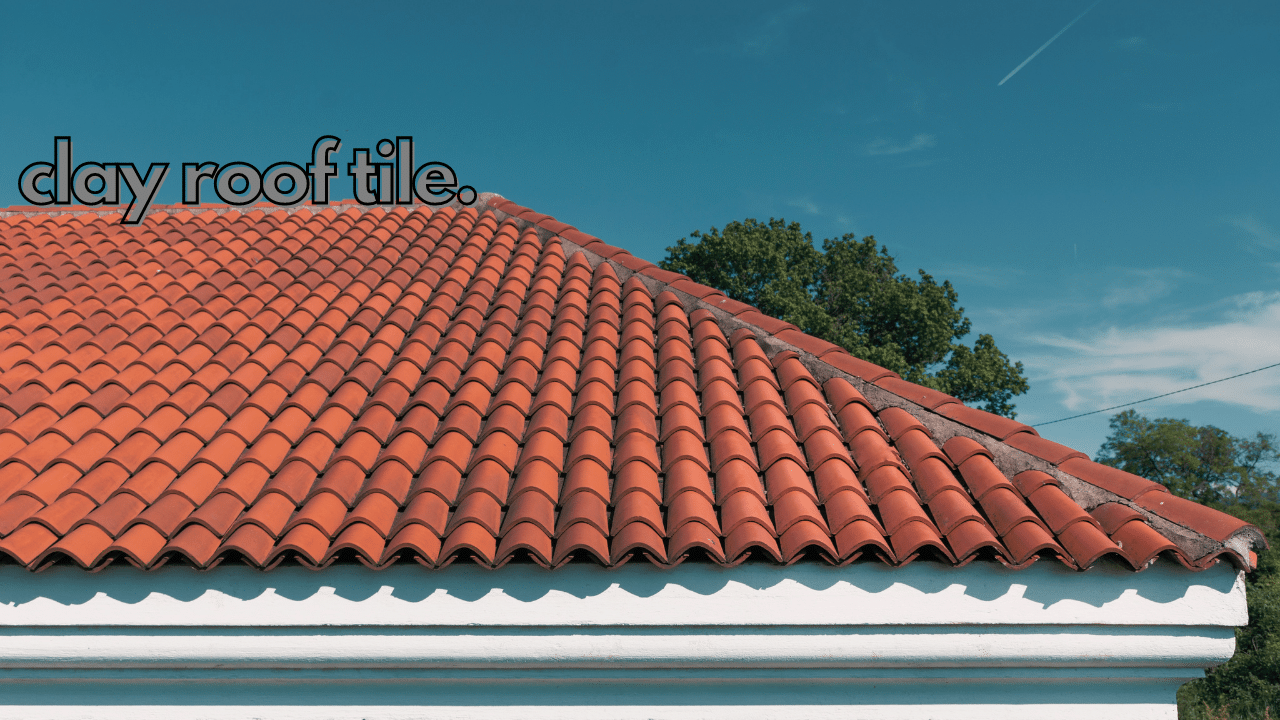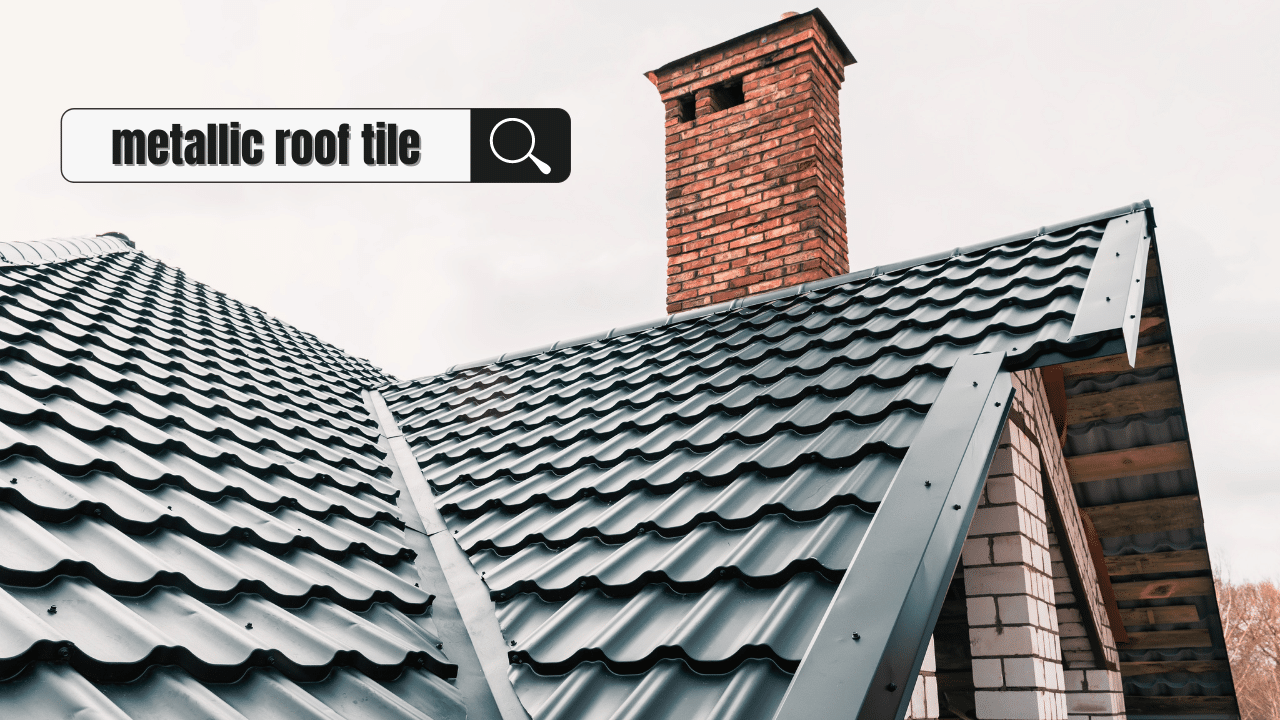No home is complete without a covering to crown it. When it comes to choosing a roof, you could stick with conventional shingles – or you could experiment with the extraordinary. While both protect the top of your house, roof tiles convey a specific flair that no shingle can capture.
The only problem is: which type of tile do you pick? With six primary options to choose from, the selection can overwhelm an unsuspecting homeowner. Rest assured that understanding each possibility can help you make the perfect decision for your specific residence. (Related: Roof Replacement Cost & Consumer Guide)

1. Concrete Roof Tiles
While these tiles have existed since nineteenth-century Bavaria, modern-day residents covet them all the same. Concrete roofing mixes cement, sand, water, and color dyes into a unique combination that adorns countless American homes.
Advantages of Concrete Roof Tiles
As with concrete poured on the ground, these roof tiles can withstand whatever the weather throws at them. Hail and other falling objects cannot easily pierce or chip these tiles.
More than almost any other material, concrete allows for a wide breadth of customization options. From curves to colors, these tiles can accommodate whatever aesthetic the homeowner had in mind.
Disadvantages of Concrete Roof Tiles
While these tiles can resist the destruction of hail, they instead fall prey to rainfall. Concrete absorbs 16% of water, allowing moisture to seep in and overstay its welcome. This can cause mold and other fungi to spawn more and more over time.
With their significant weight, roofers will need to reinforce the structures underneath the ceiling to support these tiles. Concrete can also require experienced installers to implement the tiles. This narrows the pool of potential companies to utilize and often increases the price point.
Price of Concrete Roof Tiles
While prices can vary from company to company, most concrete roof tiles cost between $4.50 to $10.50. This affordable pricing accommodates homeowners with budgets of all sizes.

2. Clay Roof Tiles
Before history could be recorded on parchment, civilizations turned to clay to cover their homes. People still turn to this tried-and-true material to protect their heads from the elements.
Advantages of Clay Roof Tiles
Given their weight, clay tiles can outweigh the tugging of a strong storm. This roofing has a wind resistance of up to 200 MPH, keeping it from blowing away in a hurricane. Those who find themselves rooted in a storm-ridden area should consider the protection these provide.
Not only does it resist wind, but it is impervious to rot as well. Its ability to repel water works in tandem with its ability to prevent insects from infiltrating one’s home.
Disadvantages of Clay Roof Tiles
While their weight can thwart any winds, these 600 lb. tiles also weigh down one’s home altogether. Ceilings that are not properly reinforced can come crashing down on top of unsuspecting residents. These additional supports rack up installation fees and amplify the overall price of the roofing project.
Their invincibility against the fire and wind does not make them as impervious to hail, however. Clay has a tendency to break with minimal effort needed to damage its structure. A stray hailstone, animal, or thrown item can cause these to chip and shatter.
Price of Clay Roof Tiles
On average, clay roof tiles cost between $6 to $14.50 per square foot. Even with their drastic price range, they cost 30% more than concrete tiles. Their price has decreased in recent years due to the innovation of other, more durable materials.
3. Synthetic Roof Tiles
Synthetic tiles may look identical to their natural counterparts, but don’t be deceived. This roofing utilizes recycled materials to recreate the appearance of slate, shake, or Spanish tile.
Advantages of Synthetic Roof Tiles
Should the worst occur and a fire break out in your home, synthetic roofing won’t succumb to the flames. Most tiles receive a Class A fire rating which allows them to withstand up to 4 hours of intense heat before collapsing.
Synthetic materials resist more than fire – they repel water as well. Their inability to absorb liquids keeps fungi, like mold or moss, from populating overhead. As these contaminants can drastically affect your respiratory health, any prevention method can save your lungs – and your life.
Their water-repellant nature prevents them from inconveniences their natural counterparts suffer from. Synthetic tiles won’t rot like wood, or crack and split from infiltrating moisture as Spanish tile can. This extends the natural lifespan of your product and prevents potential damage.
Disadvantages of Synthetic Roof Tiles
Despite their extensive advantages, not everything about synthetic materials is up to snuff. Because of its recent inception, having only been introduced in 2000, we have a limited understanding of synthetic roofing. Longer-lasting research is required to verify all of the above claims of its supposed advantages.
Given their composition, synthetic roof tiles all contain recyclable components. However, as each blend of materials differs between manufacturers, certain tiles are not wholly recyclable.
When first installed, homeowners may notice a distinctive smell should the tiles have incorporated rubber into their composition. Fear not: this smell will fade over time. However, the pungent odor can prevent those with strong senses of smell from waiting it out.
Price of Synthetic Roofing Tiles
Homeowners interested in synthetic materials will need to shell out $9 to $12 per square foot. Depending on the makeup of the individual tiles, and the material it imitates, prices can vary.

4. Metallic Roof Tiles
While other materials draw out the gritty nature of stone and asphalt, not every homeowner desires this aesthetic. In this case, metallic roofing offers a sleek and shiny alternative that will make an impact on passersby.
Advantages of Metallic Roof Tiles
Metal roofing allows homeowners to customize the style and color of their overhead covering. While each has its own distinct strengths and disadvantages, metal tiles come in copper, aluminum, zinc, and steel variations. Of all these options, steel dominates the market due to its natural abundance, inherent durability, and lightweight nature.
Even better: metallic roofing is 100% recyclable at the end of its lifespan. Manufacturers utilize recyclable materials while making these tiles, keeping them out of landfills and put to good use.
Disadvantages of Metallic Roof Tiles
However, not every homeowner will find them as enjoyable as they are environmentally-friendly. Metallic roofs tend to send noises reverberating throughout one’s home. A sudden rainfall may sound as though it’s happening inside of your house, leaving residents overstimulated and deafened.
Natural phenomena, such as hail, can also dent or destroy these tiles with relative ease. While they can last up to 70 years on their own, that only accounts for undamaged tiles. And should any weather have dampened the roof, its slipperiness can cause homeowners to slide right off.
If that all was not enough, metal tends not to provide worthwhile insulation. This material allows for outside temperatures to seep inside and negate the power of your air conditioning or heating systems.
Price of Metallic Roof Tiles
Should you still wish to pursue metal roofing, it will cost between $8.50 to $15.50 per square foot. The type of metal utilized could increase or decrease these prices, with copper costing the most and steel the least. Copper could raise the price to between $14 to $25 per square foot due to its popularity.
Thankfully, its ease of installation should circumvent any additional fees. Unlike concrete, homeowners won’t need to build additional reinforcements to support its weight, either.

5. Slate Roof Tiles
Few materials overtake slate in terms of popularity, and its utilization as a roofing material only enhances its status. These tiles come from natural stone, allowing for future recycling, and cover your home in a subtle gray color.
Advantages of Slate Roof Tiles
Endurance outshines every other aspect of slate tiling. Its stone composition provides it with the durability needed to last anywhere from 50 to 200 years. With the added bonus of inherent fire resistance, these tiles can survive whatever they need to weather.
Disadvantages of Slate Roof Tiles
That endurance, however, comes at the cost of its weight. Each slate tile weighs down the ceiling of a home, requiring the installation of additional supports to prevent a collapse. This, combined with the difficulty roofers have placing them, hikes up the project’s total price point.
Price of Slate Roof Tiles
Slate tiles will run homeowners between $15-25 per square foot of roofing. Combined with the additional installation and support fees, customers may need to search elsewhere for affordable roofing.

6. Solar Roof Tiles
Whatever tiling you choose will defend your home from Mother Nature. But no other option can harness the elements to your advantage quite like solar panels can.
Advantages of Solar Roof Tiles
Solar panels are a collection of voltaic cells contained within a framework and mounted onto your rooftop. These cells absorb sunlight and translate it into your house as a source of heat and energy. With 320 watts of energy produced per panel, a single installation could forever eradicate your electricity bill.
Not only do these panels aid your home – they enhance the environment. With our world in a constant state of decay, these are a viable step towards revitalizing the planet. This switch is equivalent to planting 150 trees per year in your local area.
Price of Solar Roof Tiles
Be forewarned: these panels may sweeten the environment, but they won’t be as kind to your bank account. Solar power far exceeds the pricing of any other roofing option. On average, these panels can cost homeowners anywhere between $3,500 to $35,000 depending on the model and manufacturer.
Unlike tiles, panels don’t only increase in price due to your house’s size – their cost includes their wattage, too. The higher the wattage, the more energy provided to your home. That additional electricity, however, comes at the expense of a higher price point.
